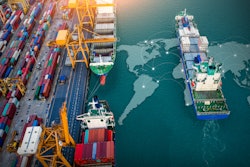BEIJING (AP) -- China will keep its currency at a "basically stable and reasonable" level and financial pressure for the yuan to rise is easing due to Europe's debt woes, the country's foreign exchange regulator said Thursday.
Washington and other trading partners complain China's exchange rate controls keep the yuan undervalued, giving its exporters an unfair advantage. Beijing announced in June it would allow more flexibility but ruled out any big changes.
Market pressure for a stronger yuan is easing because investors are buying more dollars as a hedge against the European debt crisis, the State Administration of Foreign Exchange said in a statement. It said the inflow of currency has eased since May.
"We will dynamically manage and adjust the floating of the renminbi's exchange rate and keep it at a basically stable and reasonable level," the agency said, referring to the yuan by its other official name.
The yuan has gained about 0.8 percent against the U.S. dollar since Beijing's June announcement. It has risen rapidly against the euro as Europe wrestles with its debt crisis, gaining 4.5 percent since the start of June and 14.2 percent so far this year.
Thursday's comments came in the fourth of a series of statements by SAFE on its handling of China's foreign exchange. It announced no policy changes.
The Chinese government has rejected complaints the yuan is undervalued and says it is at an appropriate level. It says any changes in policy will be gradual.
The currency regulator also said China's trade surplus will stay "relatively big," but its growth rate will slow. The government is due to release its trade data Saturday for June and the first half of the year.
Associated Press researcher Bonnie Cao contributed to this report.















